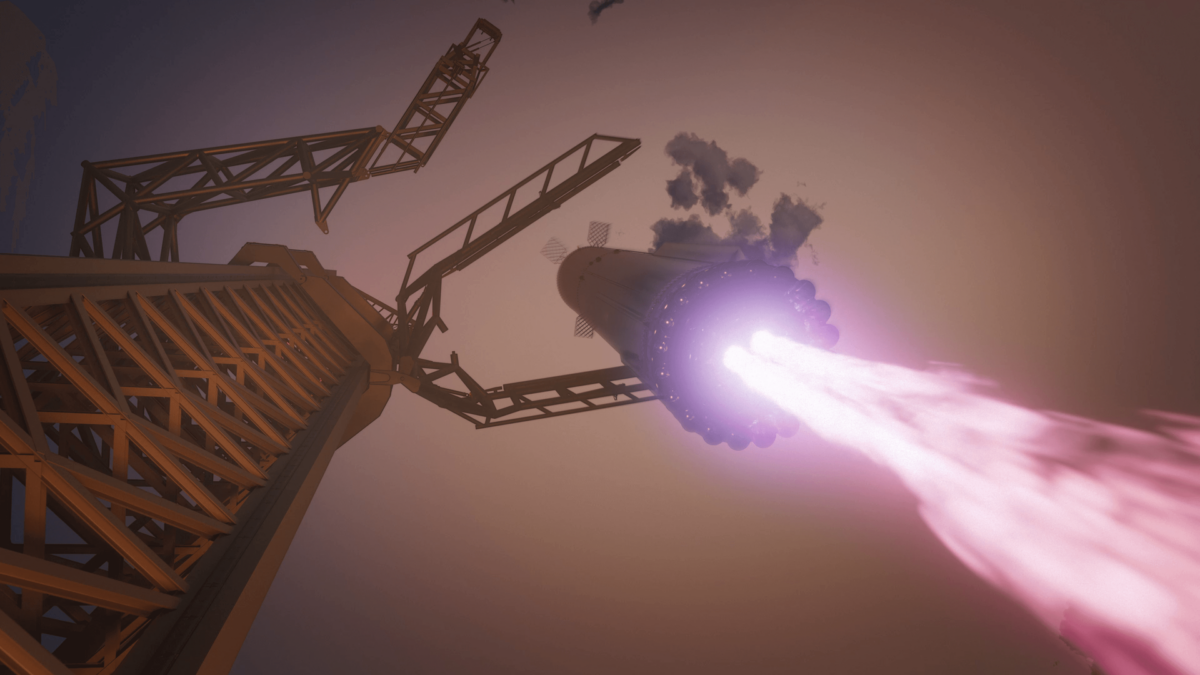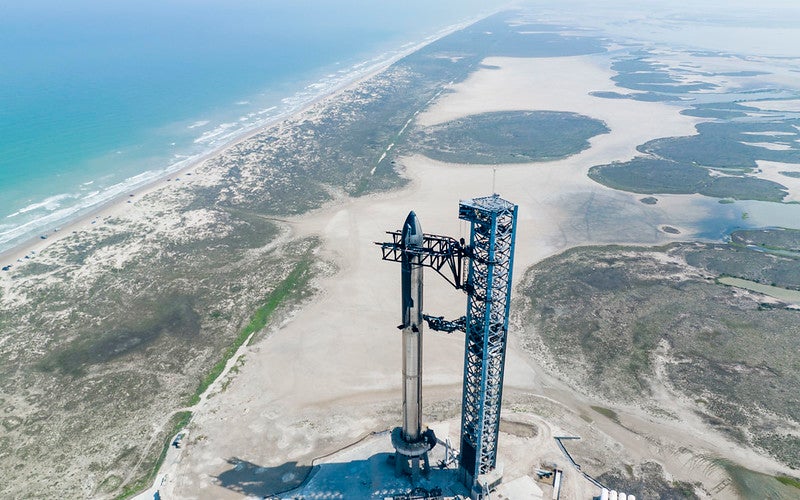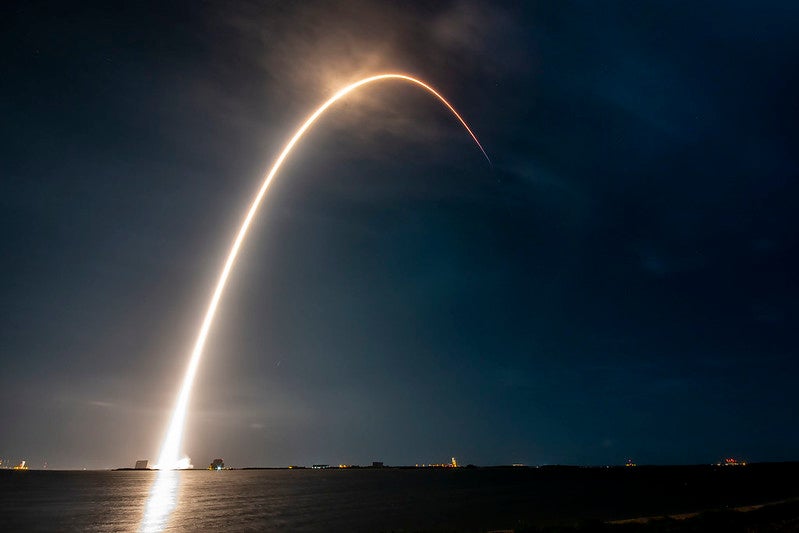
paceX this week received disappointing news from the FAA that the launch license for its fifth test flight of Starship—the largest and most powerful rocket ever built—won’t be awarded until late November. And it’s not happy.
On Tuesday, as the company occasionally does when facing what it deems to be unfair treatment, SpaceX posted a lengthy update decrying the decision. According to the firm, the FAA had assured it that Starship would get the green light this month. It claims the rocket has been ready to fly since early August, an assertion CEO Elon Musk reiterated last week.
“Unfortunately, we continue to be stuck in a reality where it takes longer to do the government paperwork to license a rocket launch than it does to design and build the actual hardware,” the firm said. “This should never happen and directly threatens America’s position as the leader in space.”
With the ability to be used multiple times on the cheap, Starship is expected to be a game-changer for U.S. spaceflight. SpaceX wants to launch the rocket up to 120 times per year from NASA’s Kennedy Space Center and Cape Canaveral Space Force Station in Florida. Musk last week claimed the vehicle will reach Mars within two years.
SpaceX is also developing a Starship human landing system (HLS), a lunar lander variant of the spacecraft, for NASA’s Artemis III mission, which would return Americans to the moon for the first time in more than half a century. Starship will require a few more test flights before the mission, which is scheduled for late 2026.
That’s not much time, but SpaceX plans to get there using its philosophy of iterative design. Basically, the company puts flight hardware through real-world testing as often as possible to learn quickly and improve the chances of success on the next flight. The strategy helped it commercialize the now-ubiquitous Falcon rocket.
“The more we fly safely, the faster we learn; the faster we learn, the sooner we realize full and rapid rocket reuse,” SpaceX said.
Each Starship test flight has flown farther and accomplished more than the last. The fourth, in June, marked the first time both Starship and the Super Heavy booster made it back to Earth in one piece after the first two attempts ended in explosions.
Keeping with the trend, Flight 5 will feature the most ambitious goal yet. SpaceX will attempt to catch Super Heavy midair using two large “chopstick” arms, returning it safely to the Starbase launch pad in Boca Chica, Texas.
The maneuver could pose risk to Starbase’s launch tower, but SpaceX says it has been preparing for years. The delay could create a ripple effect that hampers future Starship test flights. Safely returning the booster is a critical piece of the system’s reusability.
“It’s understandable that such a unique operation would require additional time to analyze from a licensing perspective,” the firm said. “Unfortunately, instead of focusing resources on critical safety analysis and collaborating on rational safeguards to protect both the public and the environment, the licensing process has been repeatedly derailed by issues ranging from the frivolous to the patently absurd.”
Related: Why the SpaceX Starship launch pad matters

What’s the holdup?
SpaceX said the FAA communicated that a launch license would be awarded this month, but the process has been delayed due to “four open environmental issues” it deems unnecessary.
Starship’s maiden voyage in April 2023 was a brief but bombastic one. The FAA grounded the rocket as it investigated the launch and explosion, which shook buildings, shattered windows, and sent ash and debris flying miles away.
The impact was more severe than SpaceX anticipated due to the lack of a flame deflector—a common fixture at launch sites that uses water to absorb energy and heat—beneath Starbase. According to Musk, the system was absent because it “wasn’t ready in time” and the company thought the pad could withstand the launch.
The FAA’s handling of Starship’s initial launch license prompted a lawsuit from five environmental groups, which the agency reportedly has sought to dismiss. With the flame deflector installed, subsequent Starship flights have not destroyed the launch pad.
However, the FAA has approved two 60-day consultations that could extend the timeline for a fifth mission.
According to SpaceX, the only proposed change to the mission’s hot-stage jettison—during which the top of the Super Heavy booster is expelled—is a new splashdown location, which it says would not raise the risk of harm to marine life. Still, the FAA signed off on a consultation with the National Marine Fisheries Service to evaluate the new site.
“SpaceX’s current license authorizing the Starship Flight 4 launch also allows for multiple flights of the same vehicle configuration and mission profile,” the agency told FLYING. “SpaceX chose to modify both for its proposed Starship Flight 5 launch which triggered a more in-depth review.”
SpaceX, though, fears the review could be longer.
“The mechanics of these types of consultations outline that any new questions raised during that time can reset the 60-day counter, over and over again,” it said.
A separate consultation with the U.S. Fish and Wildlife Service (USFWS), requested by the FAA due to Flight 5’s larger sonic boom radius, could add to the delays. A sonic boom occurs as Starship slows from supersonic speeds on its way back to Earth.
“SpaceX submitted new information in mid-August detailing how the environmental impact of Flight 5 will cover a larger area than previously reviewed,” the FAA said. “This requires the FAA to consult with other agencies.”
According to SpaceX, both agencies have studied Starship booster landings and concluded there is no significant environmental impact from sonic booms. The firm also claims studies back the idea that sonic booms have no detrimental effect on wildlife—but the jury is still out on that one.
According to an evaluation by the California Coastal Commission of SpaceX’s request to increase Falcon 9 launches at Vandenberg Space Force Base in California, experts don’t fully understand the effects of noise on animals. The commission rejected the request in part because sonic booms generated by Falcon 9—a less powerful rocket than Starship—force too many closures and evacuations of local parks.
“At Starbase, we implement an extensive list of mitigations developed with federal and state agencies, many of which require year-round monitoring and frequent updates to regulators and consultation with independent biological experts,” SpaceX said.
Among other things, the company says it works with a local nonprofit to transport injured sea turtles for treatment and monitors bird local populations, using drones to search for nests before and after launch and. It also “adopted” Boca Chica Beach through a Texas state program and sponsors quarterly cleanups it says have removed hundreds of pounds of trash.
A CNBC report last month, which SpaceX swiftly rebuked, alleged that the company violated the Clean Water Act. The Environmental Protection Agency, though, told FLYING it did indeed violate that law.
Days before Starship’s third test flight in March, the EPA issued an order directing the company to eliminate “unpermitted discharges,” citing a liquid oxygen spill from the flame deflector’s water deluge system that seeped into the surrounding wetlands. SpaceX was forced to apply for a new permit from the Texas Commission on Environmental Quality (TCEQ), which it did in July, but still ate a fine of nearly $150,000 to resolve the violation.
In response, the company denied it ever discharged pollutants or operated the deluge system without TCEQ permission. According to SpaceX, the device uses “literal drinking water” and has been deemed safe by the FAA, TCEQ, and USFWS.
SpaceX further claimed that the EPA issued its order without knowledge of its TCEQ license or “a basic understanding of the facts” of the system’s operation. It added that the fines are “entirely tied to disagreements over paperwork” and stem from a simple misunderstanding.
“We chose to settle so that we can focus our energy on completing the missions and commitments that we have made to the U.S. government, commercial customers, and ourselves,” SpaceX said. “Paying fines is extremely disappointing when we fundamentally disagree with the allegations, and we are supported by the fact that EPA has agreed that nothing about the operation of our flame deflector will need to change. Only the name of the permit has changed.”
The proposed settlement is open for public comment until October 21.

Singled out?
The implication by SpaceX is that it is being unfairly targeted for its successes.
The company is prolific within the commercial spaceflight industry—experts estimate it accounted for 87 percent of all spacecraft mass space operators sent into orbit in 2023. At the same time, it handles more NASA missions than any of the agency’s private contractors.
That dominance occasionally draws ire from competitors such as Jeff Bezos’ Blue Origin, or, as SpaceX puts it, “bad-faith hysterics from online detractors or special interest groups.”
“Despite a small, but vocal, minority of detractors trying to game the regulatory system to obstruct and delay the development of Starship, SpaceX remains committed to the mission at hand,” the company said.
NASA has made it known that it intends to become one of many customers within a commercial space ecosystem, rather than a service provider, by the end of the decade. As SpaceX continues to snap up NASA contracts—including an agreement to deorbit the International Space Station, ushering in that new era—rivals and critics may fear that its supremacy will only grow.
This article was first published on flyingmag.com.
Like this story? We think you’ll also like the Future of FLYING newsletter sent every Thursday afternoon. Sign up now.









